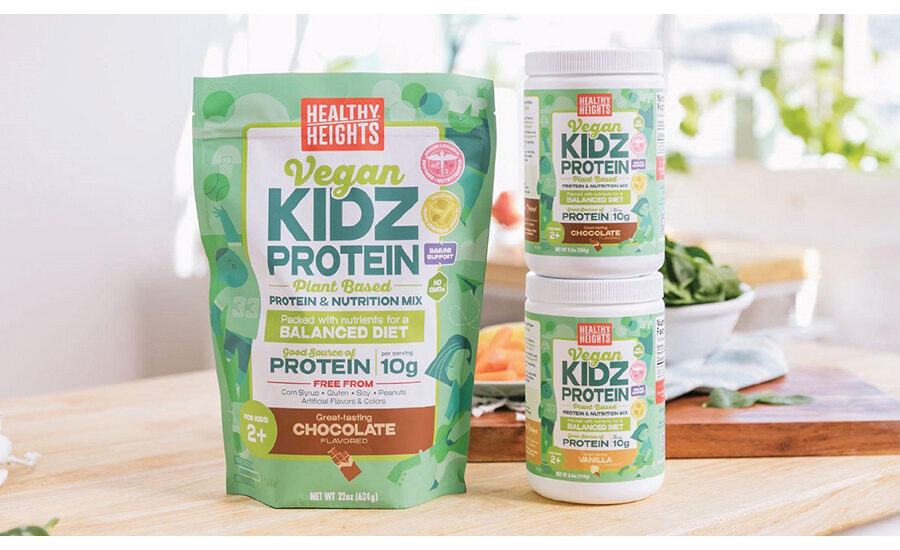More than ever before, today’s parents, especially Millennials, are paying particular attention to the foods and beverages they give their babies and toddlers. With the preponderance of obesity and food allergies, the challenges product developers face can be daunting. Avoiding certain foods can put young children at risk for not getting critical nutrients like protein, niacin, and vitamins B6, B12, folate, A, D, and E.
What kids eat is as important as what they don’t eat. Must-eat nutrients for the one- to five- set are fairly simple and accessible. Food and beverage makers can tap into a swath of strategies designed to help parents make good choices for their charges when it comes to nutrition. Start with the following essential macronutrients.
Perhaps one of the greatest advances in developing products for young children has been recognition of the importance of digestive health. The combination of newly developing immune systems and prolific exposure to all sorts of pathogens from multiple sources makes immune health especially significant. Foods and beverages rich in probiotics and the prebiotic carbohydrates that feed them have become mainstream and cover a near-endless variety.
● Protein, which makes up muscle and connective tissues, builds cells, fights infection, and makes up the enzymes needed to operate every metabolic function, from carrying oxygen to breaking down food into energy. The most bioavailable forms of protein are from eggs, followed by fish and seafood (although cultured and reputable farm/tank-raised fish are recommended to avoid mercury and other contaminants).
Pure plant proteins, especially blended proteins, can be highly bioavailable, especially if they contain the full profile of essential amino acids. Dairy proteins, too, are highly bioavailable Since the top food allergens—milk, eggs, fish, shellfish, tree nuts, peanuts, wheat, and soybeans—come from protein foods, proper labeling is a must.
● Carbohydrates provide energy, help the body use fat and protein for building and repairing tissue. Carbohydrates comprise different forms, including sugars, starches, and gums and fibers. The latter contribute to digestive health and, therefore, immune function.
● Fat is an important macronutrient infants and toddlers especially need for proper growth and development. Omega-3 fats (polyunsaturated fats) offer enormous health benefits for brain growth and neural and cognitive development. Of the omegas, eicosapentaenoic acid (EPA) and docosahexanoic acid (DHA) are the most critical.
Healthy lipids also perform a litany of other functions necessary for proper growth and development. They’re the component of vitamins A, D, E and K, as well as micronutrients such as phosphatidyl serine and phosphatidic acid—both critical to neural and cognitive development and function—and secondary carotenoids, important for eye health and protection from inflammation and chronic disease risk.
Linoleic acid as well is an essential omega-6 fatty acid that the body cannot make on its own. A good variety of fats are found in foods like olive, canola or peanut oil, eggs, avocado, and yogurt and other dairy products.
Babies and toddlers also rely on monounsaturated fats, which support healthy cardiovascular systems. These fats can be found in the aforementioned oils, olives, seeds, nuts and avocados. Saturated fat and cholesterol offer essential nutrients for growth and development in children, especially those under two years of age. Cholesterol is a key brain lipid. For children four and older, experts recommend that these fats be limited.
A Child’s ABCs
Vitamin A is needed to help kids (and adults) maintain good eye and skin health and also to prevent infections. A lipid-based vitamin, it functions as one of the most important antioxidants in the diet. In its beta-carotene form, it shows up in a number of foods kids already enjoy—carrots, sweet potatoes, and winter squashes.
All the B vitamins are critical to the healthy building and functioning of young bodies. Folate, classified as a B vitamin, is needed for growing and developing healthy cells. Ingredients with high levels of folate include fortified grains, beans, and green vegetables, especially leafy greens.
The AMA identified choline as one of several key “brain building” nutrients critical to early childhood development. Due to its structure and function, it is considered to belong to the class of B vitamins. A 2018 randomized, double-blind, controlled feeding study published in the Federation of American Societies for Experimental Biology journal—“Maternal choline supplementation during the third trimester of pregnancy improves infant information processing speed”—supports the importance of choline in prenatal health.
Vitamin C is an antioxidant that also is a factor in a number of the complex enzymatic processes that run the machinery of the body. Vitamin C is important for immunity, skin integrity, and strengthening the wall of blood vessels. All of these are key elements of wound healing.
C is also for calcium, the primary mineral of bones, teeth, nails, and other hard tissues. But it needs its teammate, lipid-based vitamin D, to build and maintain those structural necessities. For rapidly growing young bodies, adequate D is vital. However, research has shown that vitamin D is important for an unusual array of actions in the body, acting as a hormone and thus contributing to everything from immunity to emotional health to help alleviating symptoms of asthma and allergies.
Vitamin E, a powerful antioxidant, is another lipid-based vitamin critical to healthy growth and development. In addition to supporting immunity and cognitive development, vitamin E is necessary to ensure a child develops the capacity to eventually reproduce.
Vitamin K, also lipid-based, is such an important nutrient for healthy coagulation and cardiovascular health that a single dose of vitamin K is standard for newborns to prevent the risk of developing fatal bleeding in the days and weeks after birth. But it also is critical for healthy bone development and should be included in foods designed for infants, toddlers, and all growing children.
All minerals, from iron and phosphorous to trace minerals such as copper, magnesium, and selenium are vital to a child’s needs for metabolism, growth and development, and performance. Zinc joins vitamin E as being important to eventual reproductive capacity, but it plays a significant part in immunity and healing.
Many of these micronutrients can be customized into premixes tailored to a product makers formulation needs. The challenge to including these nutrients in formulations for kids is hitting the right balance both between the nutrients and to conform to the needs of a wide range of ages and body sizes. Ingredient experts can help product makers create those balanced products, all while adhering to the stricter regulations guiding crafting foods and beverages for children.
Leslie Levine is author of Will This Place Ever Feel Like Home? Simple Advice for Settling In After You Move, Ice Cream for Breakfast: If You Follow All the Rules, You Miss Half the Fun, and Wish It, Dream It, Do It: Turn the Life You’re Living into the Life You Want. She has contributed to multiple food and beverage publications, as well as The New York Times, Chicago Tribune, Woman’s Day and others. She can be reached at leslie@leslielevine.com.
A Fast-Growing Problem
One of the biggest challenges children face today is increased obesity and childhood type 2 diabetes. According to the CDC, the rate of kids aged 10-19 living with type 2 diabetes doubled from 34 per 100,000 in 2001 to 67 per 100,000 in 2017, and the National Institutes of Health (NIH) reported last year that the number of new cases among kids rose by more than 40,000 worldwide. Obesity is the leading factor, accounting for more than eight in 10 children suffering from type-2 diabetes, In fact, the obesity rate of children 2 to 5 years old is around 14%.
First Thousand Days
A policy statement by the American Academy of Pediatrics, asserts that maternal prenatal nutrition and nutrition in the first two years of life (1000 days) are “essential components in a child’s neurodevelopment and lifelong mental health.” The statement goes on to suggest that health risks like obesity, hypertension, and diabetes can become a given if the fetus and child do not receive the right nutrition from the start. All nutrients are necessary for normal brain development, but for brain growth those that are particular critical include: zinc, iron, choline, folate, iodine, vitamins A, D, B6 and B12, and long-chain polyunsaturated fatty acids.






